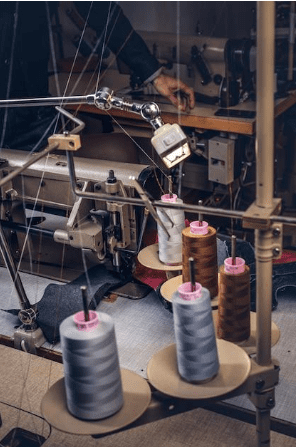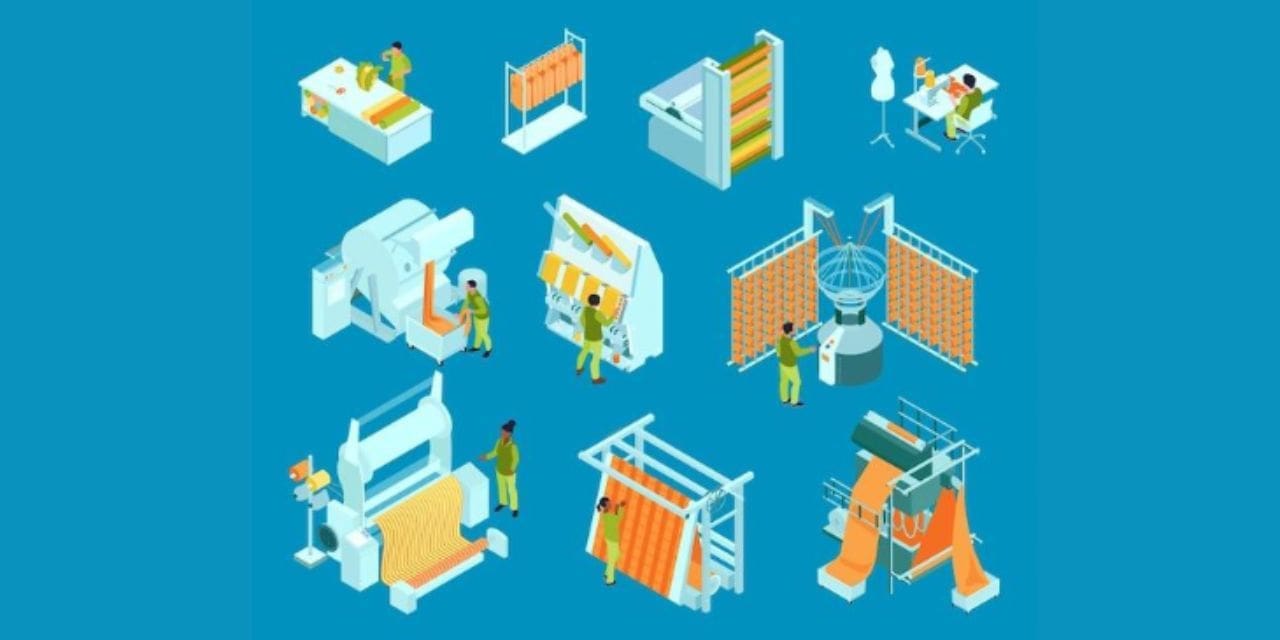The textile sector plays a significant role in the global economy by manufacturing necessities such as home textiles, clothes, and fabrics. But, while it operates, it also uses substantial energy. For textile companies, energy efficiency has become more important due to rising energy bills and increased environmental consciousness.
Manufacturers may cut expenses significantly, lower their energy costs, optimise business electricity contracts, and even boost production using energy-saving technology and practices. Achieving net zero emissions targets and reducing greenhouse gas emissions are two environmental objectives supported by this strategy and financial success.
Optimising Machinery for Better Efficiency
Optimising machinery is one of the best strategies for increasing energy efficiency in textile production. Modern energy-efficient equipment may greatly improve the quality of the final cloth and energy efficiency in textile production. For example, technological advancements in spinning and weaving machinery maintain energy efficiency in manufacturing high-quality yarn and fabric. Businesses may reduce energy use and increase efficiency by replacing outdated equipment with newer, more energy-efficient versions.
Lighting and HVAC Systems
Energy expenses in textile manufacturing plants are significantly decreased using efficient lighting solutions, such as LED light bulbs. Commercial buildings, notably textile industries, use a significant amount of energy for lighting; switching to energy-efficient lighting solutions results in lower expenses and decreased electricity use.
The energy expenses of textile manufacturing plants are also significantly impacted by air conditioners and heating, ventilation, and air conditioning (HVAC) systems. Reducing energy use and improving the indoor climate may be accomplished by installing energy-efficient air conditioners and updating insulation, which will eventually increase worker comfort and productivity.
Smart Energy Contracts and Data Analytics
Smart energy contracts are another option businesses may investigate to control better how much electricity they use. These agreements allow textile industries to save money and reduce energy bills by allowing for flexibility in energy prices. Manufacturers can adjust their processes to lower energy consumption by identifying locations where energy is utilised excessively without sacrificing production.
Another effective method for raising energy efficiency is data analytics. Businesses may track their energy usage at every production stage using real-time data tracking. To address inefficiencies in operations like finishing, weaving, or dying, organisations may use analytics to find and fix these problems. By supporting the optimisation of textile production, this data-driven strategy reduces energy use and boosts productivity.
Sustainable Fibre Production
The fibres used in textile production are also energy efficient. Compared to synthetic fibres, wool, plant fibres, and other natural fibres often need less processing energy. By integrating more sustainable materials into manufacturing, businesses may lower their energy consumption and carbon footprint.
Compared to synthetic alternatives, cotton and wool fibres demand less energy during spinning and weaving operations. Energy efficiency is exceptionally high in the manufacture of cotton seed fibres. The energy needed for finishing can be further decreased because natural fibres often have lower degrees of crease resistance.
Nevertheless, in the textile sector, synthetic fibres continue to be vital. A more sustainable balance between natural and synthetic materials can be achieved by developing energy-efficient synthetic fibres through manufacturing processes that consume less energy.
Energy-Efficient Practices for Dyeing and Finishing
Energy-intensive dyeing is common in the textile industry, mainly when fixing colours requires high temperatures. Implementing energy-efficient dyeing techniques can cut expenses, avoid water contamination, and use less energy. Modern finishing methods, which limit the use of hazardous chemicals, may improve the industry’s environmental impact.
Businesses might use dry or low-temperature dyeing processes to reduce water and energy usage. These methods minimise energy usage and greenhouse gas emissions, contributing to the industry’s net zero emissions targets.

Integration of Electric Vehicles in Textile Production
Efficiency in energy use can also be enhanced by the industrial sector’s transition to electric vehicles (EVs). The transportation of both raw materials and completed items is essential to many textile businesses. Fuel expenses and greenhouse gas emissions can be decreased by switching to electric vehicles. Textile firms may accomplish their sustainability goals with the help of energy-efficient methods and electric car use.
Role of Local Governments and EU Countries
Local governments and EU nations are essential to encouraging energy efficiency in the textile business. Businesses may save energy expenses by adopting policies that support material efficiency, reduce air pollution, and promote energy-efficient techniques. These policies help the industry lessen the consequences of climate change and its environmental impact.
Conclusion
Lower costs, saved energy, and increased productivity depend on textile production’s increased energy efficiency. Textile producers may improve their energy performance through various strategies, such as smart energy contracts, energy-efficient lighting, and optimised machinery. Natural fibres and energy-saving procedures like sophisticated dyeing methods support sustainability aims. As the industrial sector develops, emphasis on energy efficiency will continue to be essential for cutting costs, safeguarding the environment, and fostering long-term company success. By adopting these eco-friendly practices, businesses can reduce their carbon footprint, meet regulatory requirements, and ensure future competitiveness in an increasingly environmentally conscious market.

